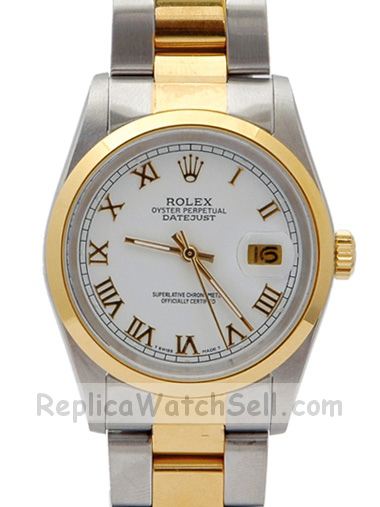The Timeless Elegance of Watches: A Deep Dive into Their Craftsmanship and Technology
The Art of Watchmaking
Watches have been an integral part of human history, serving not only as timekeeping devices but also as symbols of status, craftsmanship, and personal style. The evolution of watches from simple sundials to complex mechanical marvels is a testament to human ingenuity and the relentless pursuit of precision. In this article, we will explore the intricate world of watchmaking, the various types of watches available, and the significance of technology in modern horology.
The Evolution of Timekeeping

The history of watches can be traced back to ancient civilizations, where the measurement of time was primarily based on the position of the sun. The earliest timekeeping devices were sundials, which used the sun’s shadow to indicate the time of day. As societies advanced, so did the technology of timekeeping. The invention of mechanical clocks in the Middle Ages marked a significant milestone, leading to the creation of portable timepieces.
The first true wristwatches emerged in the late 19th century, initially designed for women. However, it wasnât long before men began to embrace this innovative design. The practicality of wearing a watch on the wrist rather copy patek philippe nautilus than carrying a pocket watch became evident, and thus the wristwatch gained popularity. Today, watches come in various forms, from traditional mechanical watches to modern smartwatches.
Types of Watches
Watches can be broadly categorized into several types, each serving different purposes and appealing to different audiences. The primary categories include mechanical watches, quartz watches, digital watches, and smartwatches. Each type has its unique characteristics and benefits.

Mechanical watches are often regarded as the pinnacle of horological craftsmanship. These watches operate through a complex system of gears and springs, requiring meticulous assembly and precision engineering. Enthusiasts appreciate the artistry involved in their creation, as well as the intricate movements visible through transparent case backs. Mechanical watches can be further divided into manual and automatic types, with the latter winding itself through the motion of the wearer’s wrist.
Quartz watches, on the other hand, utilize a battery-powered movement that is known for its accuracy and low maintenance. The introduction of quartz technology in the 1970s revolutionized the watch industry, making timekeeping more accessible and affordable. While quartz watches may lack the romantic allure of their mechanical counterparts, they have become a staple for those seeking reliability and ease of use.
The Rise of Smartwatches
In recent years, smartwatches have emerged as a significant player in the watch market. Combining traditional timekeeping with advanced technology, smartwatches offer a range of features including fitness tracking, notifications, and customizable interfaces. Brands such as Apple, Samsung, and Garmin have led the charge in this new era of wearable technology, appealing to a tech-savvy audience.
Smartwatches have changed the way we interact with timepieces, blurring the lines between functionality and fashion. While some purists may argue that smartwatches lack the soul of traditional watches, their convenience and versatility cannot be denied. As technology continues to evolve, the future of watches will likely see an even greater integration of smart features into traditional designs.
The Importance of Craftsmanship
Regardless of the type of watch, craftsmanship remains a crucial aspect of the industry. High-end brands often emphasize the artisanal techniques employed in their manufacturing processes. From hand-assembled movements to meticulously polished cases, the attention to detail in luxury watches is unparalleled. This commitment to quality not only enhances the aesthetics of the watch but also ensures its longevity and performance.
Brands such as Rolex, Patek Philippe, and Audemars Piguet have built their reputations on the foundation of exceptional craftsmanship. Collectors and enthusiasts often seek out these timepieces not just for their functionality but also for their historical significance and the stories behind their creation. In this realm, the term “replica” has gained traction, referring to imitation watches that attempt to capture the essence of luxury brands without the same level of craftsmanship or authenticity.
Collecting Watches: A Passion and an Investment
Watch collecting has become a popular hobby for many, with enthusiasts drawn to the thrill of discovering rare pieces and the satisfaction of curating a personal collection. The market for vintage and limited-edition watches has exploded in recent years, with some pieces fetching astronomical prices at auctions. Collectors often view watches not only as accessories but also as investments that can appreciate over time.
When it comes to building a collection, knowledge is paramount. Understanding the history of various brands, the significance of specific models, and the nuances of craftsmanship can greatly enhance a collector’s experience. Additionally, attending watch fairs and exhibitions can provide valuable insights and opportunities to connect with fellow enthusiasts.
Conclusion: The Future of Watchmaking
As we look to the future, the watch industry faces both challenges and opportunities. The rise of smartwatches, changing consumer preferences, and the impact of sustainability are all factors that will shape the industry in the coming years. However, the enduring appeal of traditional watches, with their rich history and unparalleled craftsmanship, ensures that they will remain a cherished part of our culture.
Whether you are a seasoned collector, a casual wearer, or someone simply fascinated by the art of watchmaking, the world of watches offers something for everyone. From the intricate patek philippe aquanaut 5167a 001 mens 40mm automatic mechanisms of mechanical watches to the cutting-edge technology of smartwatches, the possibilities are endless. As we continue to embrace innovation while honoring tradition, the legacy of watches will undoubtedly endure for generations to come.
Leave a Reply